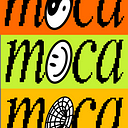The space is in a critical period.
Art continues its natural evolution. Ideas change, and thinkers and artists express them.
“All things are born of necessity and are of value in their age.”
The system which directs society and the living conditions of each individual is transformed.
A new dimension opens up.
Two-dimensionality is torn apart, and a tetra dimensional place is reached. The canvas is no longer sufficient.
“Humans take on a different psychic structure. We live in the age of mechanics. The painted cardboard and the upright plaster no longer have a reason to be.”
This art, does not correspond with the needs of the humans of today.
“A change in essence and form is required. It requires the overcoming of painting, sculpture, poetry and music. A greater art is required in accordance with the needs of the new spirit.”
Stated in 1946, in Buenos Aires by the Spatialists.
Space is represented with greater amplitude over several centuries; the figures seem to leave the plane and continue in space.
The physics of this era, for the first time, expresses nature through means of dynamics. It is determined that movement is an imminent condition of matter as a principle of understanding the universe.
Having reached this point in evolution, the need for dynamism is so great that it cannot be met by plastic.
Paintings and sculptures remain nullified by the art of time. A need for movement is fully manifested.
Already the impressionists sacrificed drawing and composition.
Then the futurists eliminated certain elements and adopted movement as the only end.
Finally, the cubists made it their vision.
Today’s artists no longer create paintings but concepts of art. They postulate an art free from any aesthetic deception that lives in a space no longer determined by reality.
Luciano Fontana expresses this concept and concretizes it in the most material way possible so that it could become visible to all; a heroic gesture of the artist to save the idea of non-art.
So, he cuts the canvas.
He fractures the canvas. He searches, within the cuts and holes, the expectation of becoming. Opening up new spaces, he enters a new measure, breaks the character exalted until now, and goes beyond the common horizon.
He challenges this idea of two-dimensionality leftover from the past and makes it three-dimensional. The Argentine artist intervenes in society to keep alive the reason for being a human being, exalting irrationality and the Dionysian spirit through his art.
He, therefore, affirms solidity. It cuts through the picture and wounds it. He shows that time and space are flesh, they are erotic, sensual material, they possess a body, they have a depth, they have an instinct, and it is necessary to bring these characteristics to the surface: the only way to do this is by breaking the canvas, by showing the beyond.
Fontana has opened a superior dimension; a dimension that is not pictorial but philosophical. He perceived that art would enter another space.
A spatial concept.
Humans are conquering new spaces, they are projected in new words, the metaverse is one of them.
The artistic phenomenon of CryptoArt is the natural evolution of all the researches carried out in the past. And again, following a diachronic circularity, this art has broken the daily continuity. It has traumatized the idea. It has repudiated complete rationality, considering it the murderer of being. It has exerted on the spectator the effect of a shock. It has shown a new horizon of meanings capable of creating a new structure, and a whole new perspective of experience.
